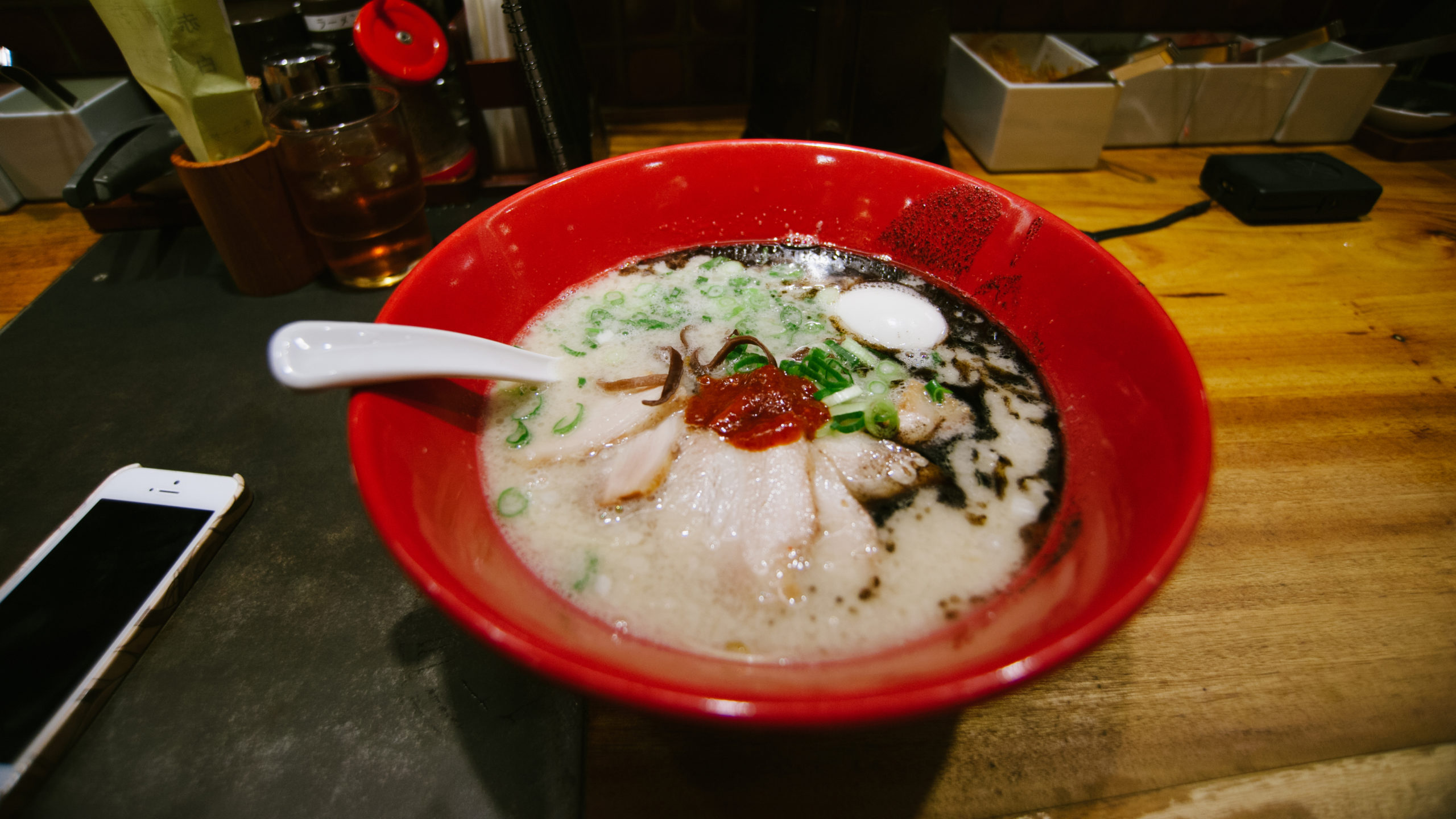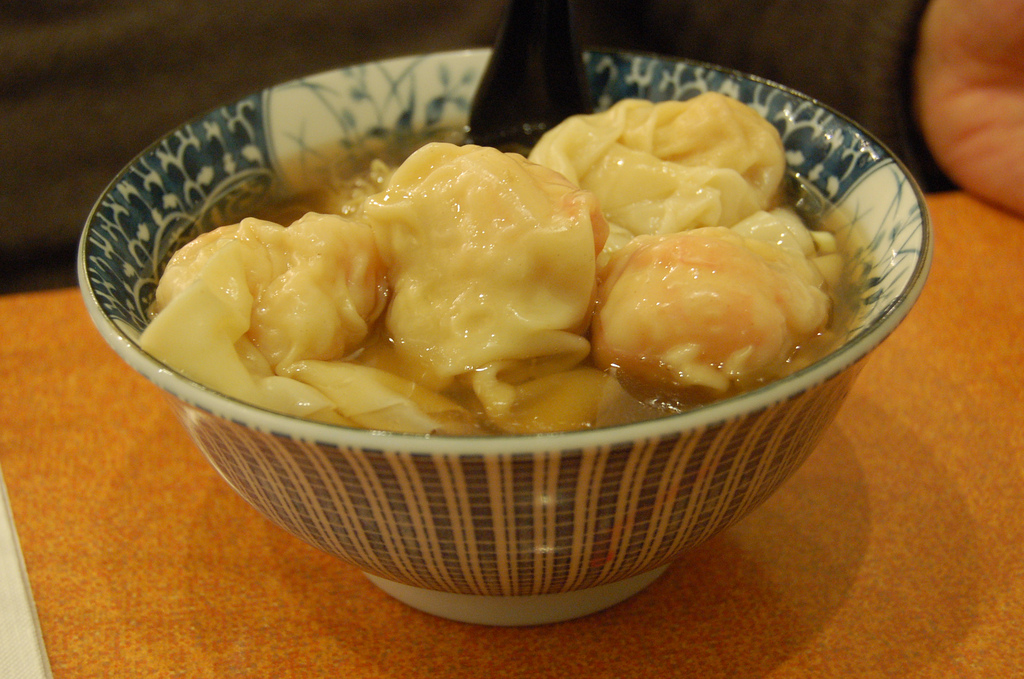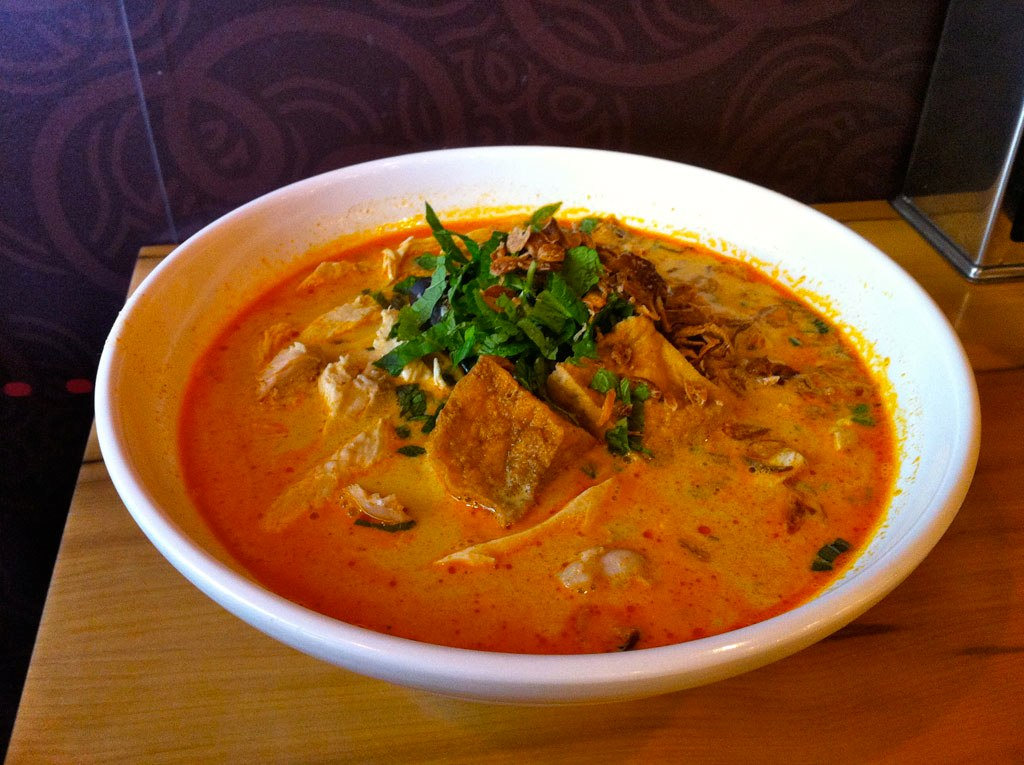There’s something uniquely satisfying about a flavorful soup that’s filled to the brim with noodles and topped with meat, vegetables, and spices. A classic chicken noodle soup always hits the spot, but today let’s branch out to a few delicious noodle soups that are the perfect belly-warming meal.
Ramen

We properly begin this list with probably the most renown of all noodle soups: ramen! You’re probably no stranger to ramen, but sorry, Top Ramen doesn’t count. I’m not just being a ramen snob here; it’s the truth. There’s a reason that good, authentic ramen shops attract droves of hungry people and justify hours of waiting for a single heaping bowl.
A well-made bowl operates in a whole different galaxy: the noodles are fresh and springy, the broth is born of a very patient process that can take between 8 to 24 hours (yet it takes, like, five minutes to slurp it all up), the addition of other ingredients like dashi or tare for extra umami, and the myriad of different toppings, like bamboo shoots, green onions, seaweed, a golden soft-boiled egg, and slices of pork belly, to name a few.
If you want to make authentic-tasting ramen at home, you have to concentrate on the heart of the ramen: its broth. Most ramen broths are made primarily from pork, sardines, bonito, kelp, or a combination of these, but the “heaviness” of the broth can also differ. Heavy (kotteri) broths are thick, cloudy, and more fatty, whereas light (assari) broths are clear and thin. It’s mostly personal preference.
The video above by Just One Cookbook shows you how to make a more kotteri miso ramen. (For tonkatsu, or pork bone soup, check this video out.) If you’re feeling like a lighter, assari broth, the video below by CiCi Li walks you through a shoyu, or soy sauce-based, ramen.
Ramen uses specific noodles and can vary in thickness as well. I almost always prefer thick noodles because I love the chewiness and their velvety smoothness when I slurp them. If you head to an Asian market, look for something like this. Otherwise, you can use straight egg noodles or make it at home with a standing mixer. And don’t forget to slurp the hell out of your noodles. The louder, the better, the more delicious it is.
Pho
Pho (pronounced like fuh) is a Vietnamese noodle soup that’s traditionally made from boiling beef knuckle bones, onions, ginger, fish sauce, and a “spice bag” that’s a hodgepodge of different essential spices. A bowl of pho typically has thin (or sometimes thicker and flat) rice noodles and a variety of beef parts, served with garnishes like mint leaves, bean sprouts, cilantro, lime, and basil on the side.
Pho is a versatile, anytime sort of meal, at any time of the year. I’ll eat it even if it’s 100-degrees out (as long as there’s air conditioning). Some people have pho for breakfast, and its biggest champions I know swear that it’s the ultimate cure to a hangover.
The type of beef bones you use, along with charring the onions and ginger before throwing them in the soup pot, helps bring to life a kick-arse pho broth. For best results, Steamy Kitchen suggests bones that are packed with collagen to add body and richness to your broth. Cow knuckle and leg bones are ideal, but if those aren’t available, snag some ox-tail; or beef chuck or brisket, if all else fails. Also, don’t forget to fish out that nasty-looking scum that will float to the surface.
The video above is a basic beef pho recipe, which consists of rice noodles in soup with thin slices of flank steak (that’s cooked further by the piping hot soup). You order pho with different combinations of meats, including beef tripe, tendon, brisket, or even chicken; but count on it always coming with a plate of raw mung bean sprouts (pro-tip: you can ask for them pre-boiled and softened,) sliced chilli peppers, and other garnishes that you can use to customise the flavour of your soup.
Real talk: try the broth first without adding a damn thing to it — including hoisin or sriracha sauce. Here arguments for sauce or no sauce fall into “cake versus pie”-esque territory, but you should definitely appreciate a fantastic pho broth before you start customising it.
Wonton Noodles

Throw a rock in any direction while standing in Hong Kong and you’ll easily find some place serving up a bowl of wonton noodle soup, where the golden pockets of meaty goodness float alongside egg noodles, cooked al dente, in a simple chicken stock. The delightful thing about wontons is that they can be eaten with noodles, but they don’t have to be: Enjoy in soup by themselves or tossed in soy sauce and chilli oil.
Unlike ramen and pho, the soup is not the star. It’s like Robin while the wontons themselves is Batman: Everyone cares about Batman and being Batman is a lot of work. I fondly remember spending entire days, hand-wrapping wontons with my aunt (just like in this video, except less efficiently). These doughy packages contain whatever your heart desires, but traditionally it’s either a mix of minced pork or shrimp, with white pepper, a little Chinese wine, and sesame oil. You can find wonton wrappers in the refrigerated aisle of your store, usually near the tofu.
The broth in wonton noodle soup is intentionally simple: chicken stock that’s made from simmering chicken bones (or a whole chicken), ginger, and scallions for 4 to 6 hours and then strained. Then throw in egg noodles (something similar to what’s shown here), plunk down a couple of boiled wontons, and enjoy.
Curry Laksa

Curry laksa is a delicious fusion of Chinese noodle soup and southeast asian curries. It’s common in Malaysia, Indonesia, and Singapore, where each region has a slight twist and changes up the noodles, coconut milk, and toppings in the bowl.
Coconut milk contributes a creamy, milky body, and the soup is further bolstered by chicken stock, chicken, and shrimp. A typical curry laksa is topped with shrimp, chicken, fried pieces of tofu, and fish balls, and like traditional curries, you can turn up the heat however high you want by adding more sambal oelek, a kind of chilli sauce. Conversely, if you don’t want your mouth on fire, add more coconut milk.
This video by Nyonya Cooking is detailed and easy to follow for making your own Malaysian-style curry laksa. At the core of the laksa soup is — drumroll, please — laksa paste, which you can buy either premade in a jar or whip up yourself. The paste is an oily, gooey mix of shrimp paste, chilies, shallots, lemongrass, turmeric, and other spices. Not going to lie: it’s pungent stuff, so if you’re not into a “fishy” smell or taste, you’ll probably be horrified by it at first, but the flavours all balance out in the end.
Alternatively, A Kitchen Cat shares this semi-homemade recipe, where she uses a pre-made packet of laksa paste. The two secrets to making your laksa great, she writes, is to first add a couple of kaffir lime and curry leaves and also make a concentrated stock out of the shrimp shells to punch up the flavour.
No doubt, these heavenly meals-in-a-bowl are fairly adventurous eats and take a lot of time and ingredients to prepare at home, but as this quote I just made up said, “Nothing super delicious and worth eating is easy.” Seriously, if you’ve never had these noodle soups, go try them at a restaurant and Tweet me pictures of your noodle soups so I can be jealous.
Illustration by Sam Woolley. Image by Karen Hong Photography, snowpea&bokchoi, and thatwelike.

Comments
2 responses to “Four Delicious Asian Noodle Soups To Warm You Up On A Cold Day”
sweet baby jesus I love asian noodle soups – I need to eat them more!
I like the miso ramen more than ramen… This soup is the bestest of all, seriously!